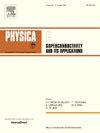Dynamic response of high-temperature superconducting magnetic levitation under real seismic wave excitation
IF 1
3区 物理与天体物理
Q4 PHYSICS, APPLIED
Physica C-superconductivity and Its Applications
Pub Date : 2025-09-25
DOI:10.1016/j.physc.2025.1354801
引用次数: 0
Abstract
The high-temperature superconducting (HTS) pinning magnetic levitation (maglev) system achieves passive and stable levitation through the coupling between HTS bulks and permanent magnet guideway (PMG), which gives it great development potential in the field of high-speed rail transit. Nevertheless, safety considerations are also crucial for the HTS maglev transportation system. Currently, there is a lack of research on the operational safety of HTS maglev trains during some extreme situation like earthquakes. Thus, this paper uses an experimentally-verified electromagnetic-thermal-mechanical model to simulate and study the variation law of the temperature rise of HTS bulks under the action of the Trinidad seismic waves (including the individual actions of longitudinal waves and transverse waves, as well as their combined action). The results show that a temperature rise of approximately 0.09 K occurs in the left and right bulk materials when longitudinal waves act alone. The comprehensive effect will cause a lateral drift of 0.6 mm. When transverse waves act alone, the temperature rise of the left and right bulks reaches 0.15 K. Compared with vertical vibration, lateral vibration increases the likelihood of the bulks experiencing a quench, thereby posing a risk of the bulks hitting the PMG. When longitudinal and transverse waves act simultaneously, the temperature rise of the left and right bulks is 0.18 K, which is significantly lower than the 92 K critical temperature for quenching. Thus, under seismic wave conditions, the temperature rise of the bulks in HTS maglev system is extremely small, with a maximum of only 0.18 K. In the existing bath cooling mode of HTS pinning maglev, this temperature rise will not cause HTS bulks to quench. However, it is essential to prevent the decline in levitation performance caused by the change in temperature rise, as this decline may lead to the risk of the bulks hitting the PMG. These findings offer valuable insights into thermal stability, which are beneficial for the future practical implementation of HTS maglev systems.
真实地震波激励下高温超导磁悬浮的动态响应
高温超导(HTS)钉钉式磁悬浮系统通过高温超导体与永磁导轨的耦合实现被动稳定悬浮,在高速轨道交通领域具有很大的发展潜力。然而,安全考虑对于高铁磁悬浮运输系统也是至关重要的。目前,对于高温磁悬浮列车在地震等极端情况下的运行安全性研究还比较缺乏。因此,本文采用实验验证的电磁-热-力学模型,模拟研究了特立尼达地震波作用下(包括纵波和横波的单独作用以及它们的联合作用)高温超导体温升的变化规律。结果表明,纵波单独作用时,左右块状材料的温升约为0.09 K。综合效应会造成0.6 mm的横向漂移。当横波单独作用时,左右体的温升达到0.15 K。与垂直振动相比,横向振动增加了块体经历淬火的可能性,从而增加了块体撞击PMG的风险。纵波和横波同时作用时,左右块体的温升为0.18 K,明显低于92 K的淬火临界温度。因此,在地震波条件下,高温超导磁悬浮系统中体块的温升非常小,最大温升仅为0.18 K。在现有的高温超导钉住磁浮液冷却方式中,这种温度升高不会导致高温超导体的猝灭。但是,必须防止由于温度升高变化引起的悬浮性能下降,因为这种下降可能导致大块撞击PMG的风险。这些发现为热稳定性提供了有价值的见解,这对未来高温超导磁悬浮系统的实际实施是有益的。
本文章由计算机程序翻译,如有差异,请以英文原文为准。
求助全文
约1分钟内获得全文
求助全文
来源期刊
CiteScore
2.70
自引率
11.80%
发文量
102
审稿时长
66 days
期刊介绍:
Physica C (Superconductivity and its Applications) publishes peer-reviewed papers on novel developments in the field of superconductivity. Topics include discovery of new superconducting materials and elucidation of their mechanisms, physics of vortex matter, enhancement of critical properties of superconductors, identification of novel properties and processing methods that improve their performance and promote new routes to applications of superconductivity.
The main goal of the journal is to publish:
1. Papers that substantially increase the understanding of the fundamental aspects and mechanisms of superconductivity and vortex matter through theoretical and experimental methods.
2. Papers that report on novel physical properties and processing of materials that substantially enhance their critical performance.
3. Papers that promote new or improved routes to applications of superconductivity and/or superconducting materials, and proof-of-concept novel proto-type superconducting devices.
The editors of the journal will select papers that are well written and based on thorough research that provide truly novel insights.

 求助内容:
求助内容: 应助结果提醒方式:
应助结果提醒方式:


